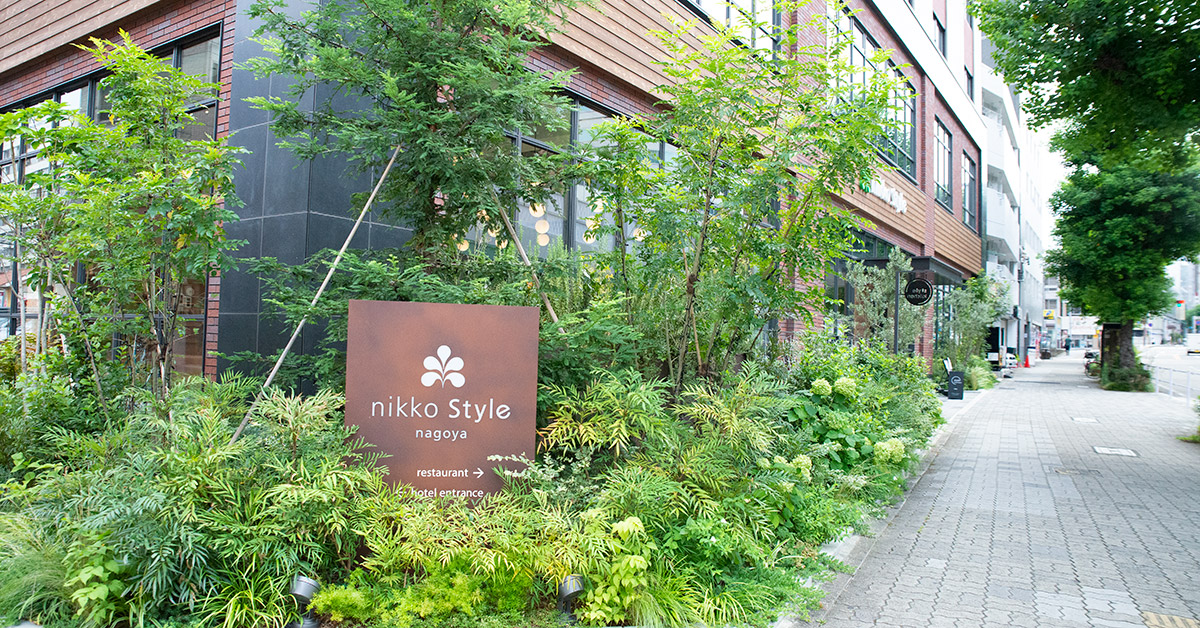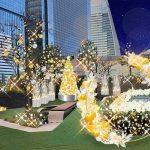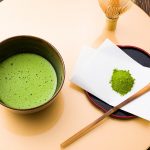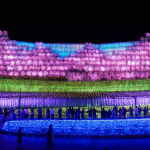Planning a trip to Japan this autumn (September to November)?
Make Nagoya, Aichi, and the Central Japan area your top destination for unforgettable autumn experiences! From breathtaking autumn foliage to seasonal festivals, local delicacies, and hidden gems, this region offers a perfect blend of tradition, nature, and culture. In this guide, we’ll show you the best spots to see autumn leaves, must-attend events, local travel tips, and all the seasonal foods you won’t want to miss. Get ready for a truly memorable autumn adventure in the heart of Japan!
Article Contents
Reasons to Visit Nagoya in Autumn
Autumn is one of the most popular seasons for tourism in Nagoya, Aichi and Central Japan, with travel peaking between mid-October to mid-November. This is largely because the autumn breeze will have finally blown away the summer heat and humidity, but also because autumn has some of the best festivals!
If you’re a foodie, you can’t beat autumn because it’s harvest time in Japan! The seasonal bounty of Japanese sweet potatoes, mushrooms, kabocha, and chestnuts are all being harvested and showcased on menus everywhere.
Last but certainly not least, the gorgeous autumn scenery – seeing all the maple leaves turn bright fiery red is a sight to behold. Not sold yet? Read on for more details on our favorite things about Nagoya, Aichi, and Central Japan in fall.
Nagoya Autumn Weather – What to Expect and What to Pack
The weather in automn makes it arguably the best time of year to travel! Spring is wonderful, but there is the small matter of the crazy pollen and rain. In autumn, by mid-October the summer heat is typically gone and the humidity abates. Average temperates range between 7 – 27° C (45 to 80° F). The nights can be quite chilly, but the daytime is generally quite pleasant!
Another reason to visit in autumn is of course the foliage! The peak foliage viewing season is usually quite late in the year, from mid-November to early December. Last year in 2024, the peak dates were between November 28th to December 4th.
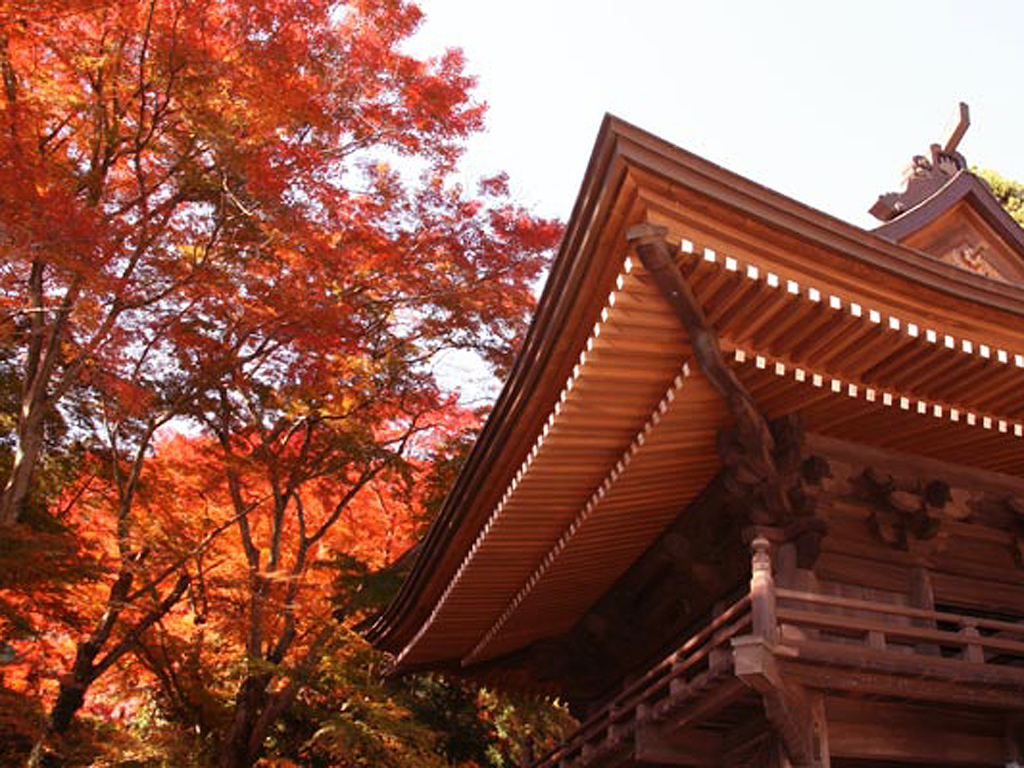
What to Bring
You’ll want to bring a mix of warm and cool weather attire for autumn. Most days you’ll likely find yourselves wearing long pants, a T-shirt, and bringing a light jacket along. We’d also advise you to bring at least one pair of shorts (or light, breathable pants) and a warmer jacket, in case the weather swings toward the hotter or cooler end of the seasonal averages.
If you’re looking for the full details on what to pack in any season, check out our full What to Pack on your Trip to Japan full post here!
Top Spots and Things to Do in Autumn in Nagoya
You can definitely visit most of these places year round! However, due to weather, foliage, and other seasonal considerations, we recommend them specifically for autumn trips. Read on to find out more!
Autumn Leaf Viewing
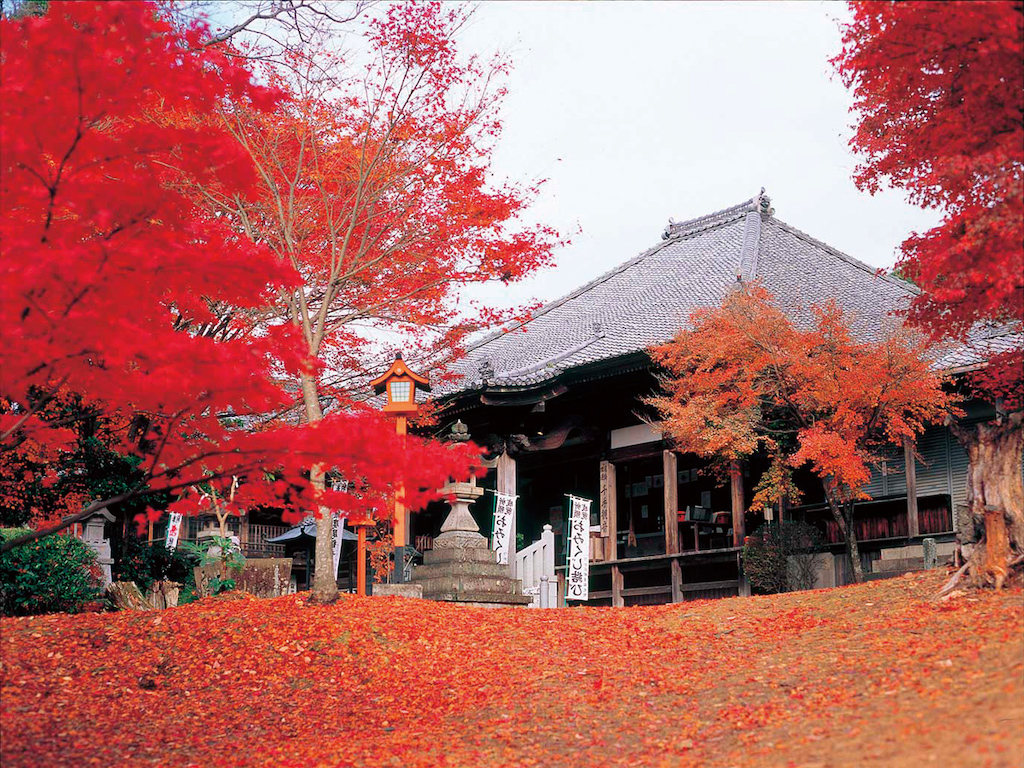
Jakkoin Temple is known as the “Temple of Maple Leaves,” so naturally we recommend a visit here during the autumn! This temple is peaceful and quiet year round, but don’t be surprised if it’s quite lively during the fall! It’s one of the best places to see fall maple trees during peak foliage season. The temple also hosts several festivals during November and December.
Check out our detailed Autumn Leaves and Autumn Festivals post here! This post contains the 2024 information, but rest assured, we will update it as soon as the 2025 festival dates are released.
Jakkoin Temple (寂光院)
Entry Fee: free
Opening Hours: open 24 hours
Address: Suginodan-12 Tsugao, Inuyama, Aichi 484-0091
Website (Japanese only) | Google Maps
Tokugawa Garden
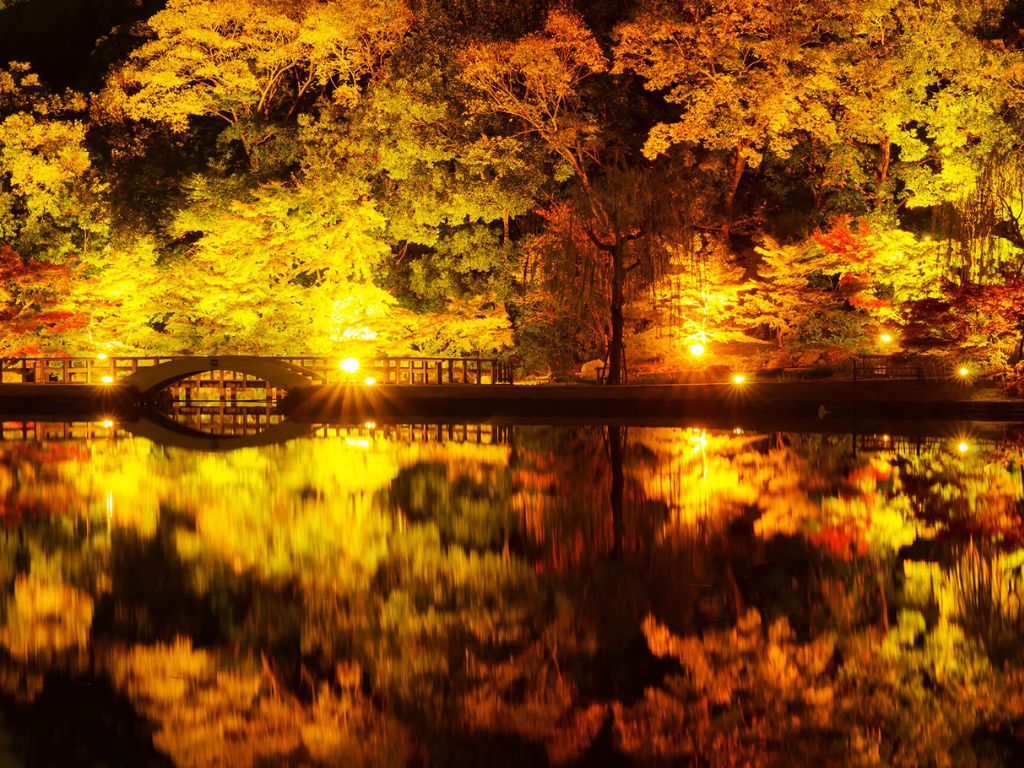
Want to see the beautiful autumn leaves, but don’t want to hoof it out of the city? You might love a trip to Tokugawa Garden!
This Japanese garden is actually part of a property that was originally designed as a retirement villa for Tokugawa Mitsutomo, the second lord of the Owari Tokugawa family. Tokugawa Garden is centrally located and features plenty of Japanese Maple (momiji) trees, which are always a stunning sight in the autumn. You can also explore pathways and find a small waterfall and a pond filled with colorful koi. Don’t miss the fall light up event! Bookmark this post or the website listed in the box below – 2025 light up dates aren’t announced yet.
If you’re interested in seeing Japanese gardens inside Nagoya, you may also be interested in Shirotori Garden.
Tokugawa Art Museum (徳川美術館)
Entry Fee: Adult 1,600 yen, student 800 yen, child 500 yen
Opening Hours: 10:00 – 17:00; closed on Mondays
Address: 1017 Tokugawacho, Higashi Ward, Nagoya, Aichi 461-0023
Phone: (+81) 052-935-6262
Website | Google Maps
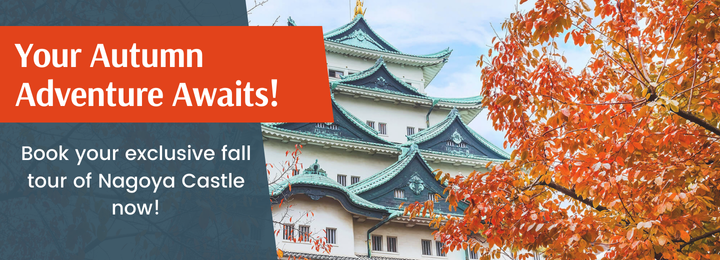
Tea Ceremony in a Traditional Japanese House
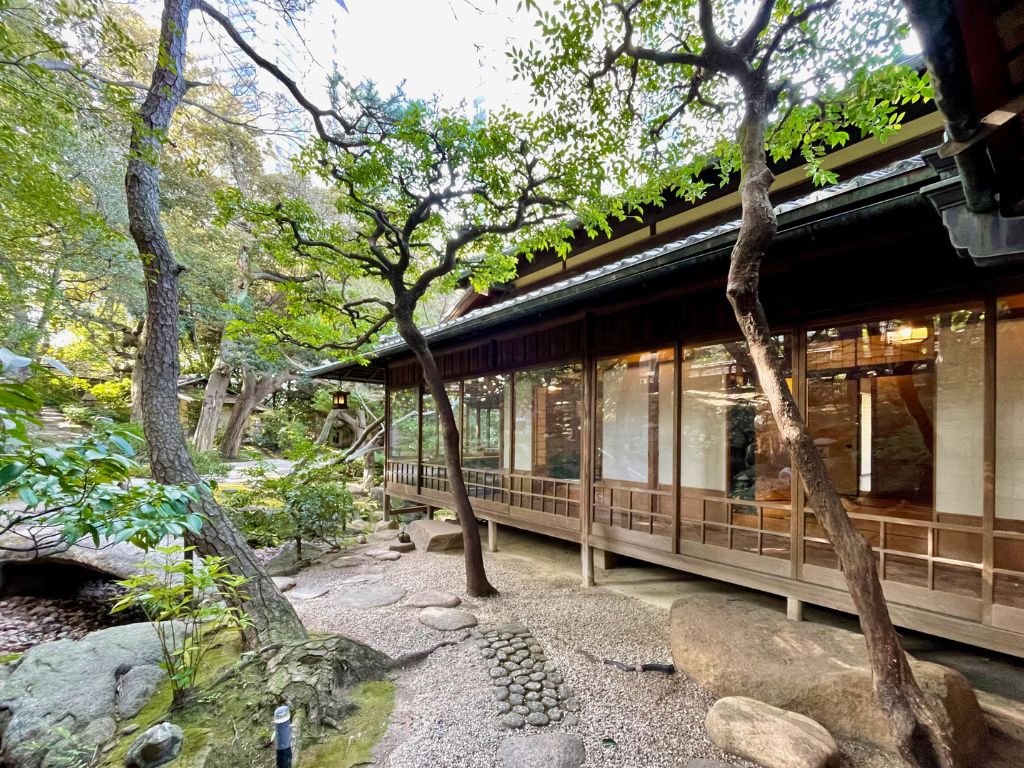
The Furukawa Art Museum collection focuses on contemporary Japanese paintings, including oil paintings, ceramics, crafts, and 15th-century illustrated manuscripts.
The best part of visiting this museum is its traditional tea house called Sukiya Cafe. You can have matcha green tea along with delicious seasonal Japanese sweets while enjoying the beautiful view of the Japanese garden, which looks absolutely stunning in the autumn! For more details, check out the tour page here, or by clicking the banner below.
Furukawa Art Museum (古川美術館)
Entry Fee: Adult 1,000 yen, University Student 500 yen, children free
Opening Hours: 10:00 – 17:00; closed on Mondays
Address: 2-50 Ikeshitacho, Chikusa Ward, Nagoya, Aichi 464-0066
Phone: (+81) 052-763-1991
Website | Google Maps
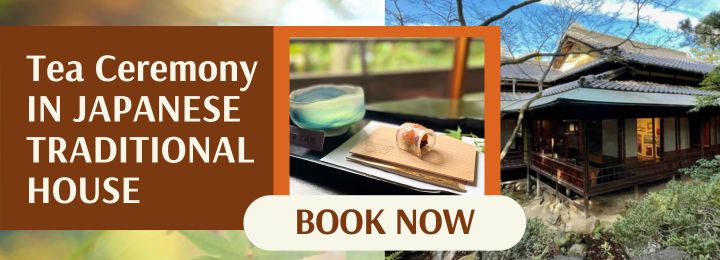
Top Autumn Day Trips
Do you have a free day in your itinerary and want to venture outside the city? Nagoya is a central transport hub which makes it so easy to access other parts of Japan. These are our top spots for day trips within a few hours from Nagoya by public transport, and all of these are absolutely gorgeous in autumn!
Magome and Tsumago
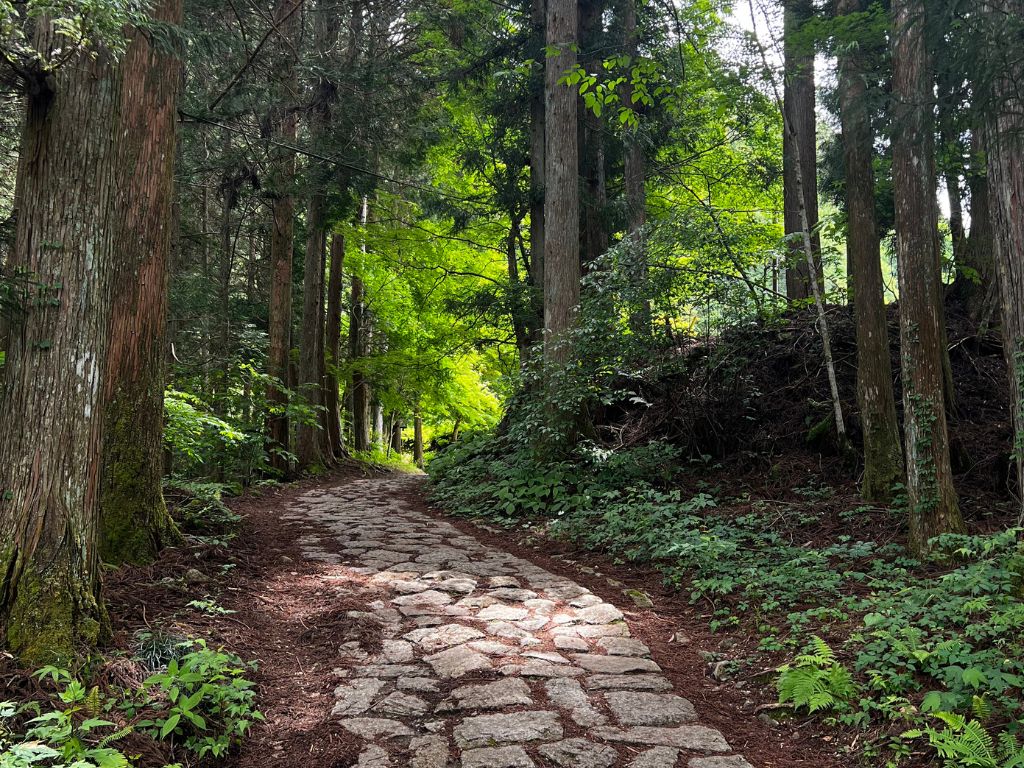
The Nakasendo Trail is a historic route through the mountains that once connected Tokyo and Kyoto. It was used by feudal lords, merchants, and other travelers during the Edo period. Magome and Tsumago are two of the 60+ well-preserved towns that are long this route, which today is a popular hiking trail. This particular stretch of trail is a doable day-trip from Nagoya, and offers beautiful scenery which is even more vibrant during the fall season. Concerned about getting lost? Join us for a guided tour of the Nakasendo trail with a knowledgeable guide to teach you about the rich history of the area, while also making sure you don’t get lost! Click the banner below for details.
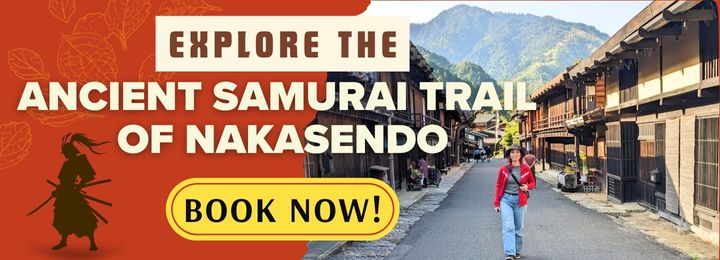
Gujo Hachiman
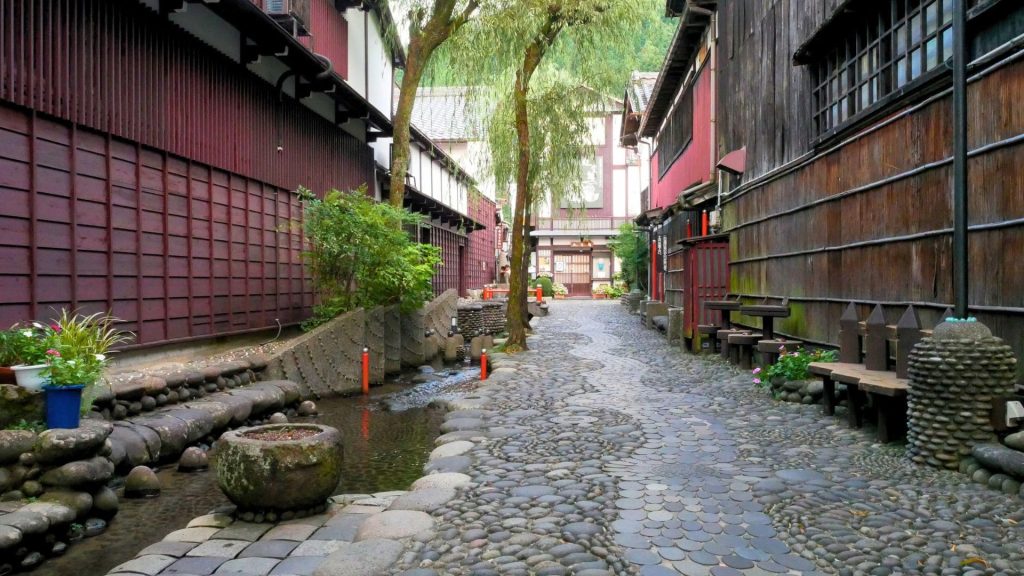
Gujo Hachiman is most commonly known for it’s Bon Odori Festival, which takes place in the summer. But Gujo Hachiman is also a lovely place to visit in the fall. It sits nestled in a valley, which lights up in mid-November with all the reds and oranges of fall. With the exception of during the Bon Odori Festival, during which Gujo Hachiman recieves over 300,000 visitors, this area is otherwise extremely quiet, making it an ideal destination for those who are looking to get away from the hustle and bustle of large cities.
Gujo is known for its unique appreciation for water, but did you know that Gujo is also famous for plastic food replicas? If you stop in Gujo Hachiman, we highly recommend a visit to Sanpuru Kobo, where you can make your own plastic food replicas as well as purchase unique plastic food souvenirs. An experience ticket also gets you access to their museum, which is a unique collection of items from 80’s and 90’s Japan, including a Nintendo64 console you can play!
Gifu City
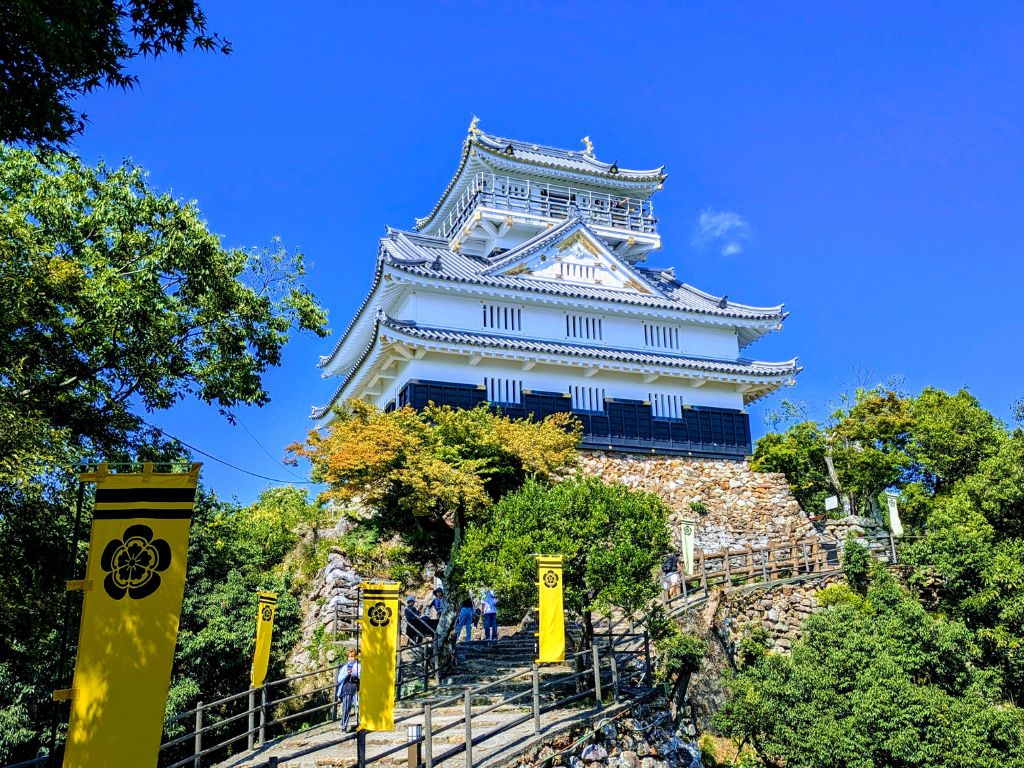
Despite being the capital of Gifu Prefecture, Gifu City is often overlooked. We think this is a mistake, as this little city has plenty to offer! First, you won’t want to miss a visit to Gifu Castle, which sits perched atop Mount Kinka. You can either hike to the top, or take the railway, where inside the castle you’ll find a museum filled with samurai armour, weapons, and artifacts. You can also visit the Gifu Kinkazan Squirrel Village.
After exploring Mount Kinka, you might want to visit the Kawaramachi Area, which is lined with scenic wooden houses, which now mostly houses restaurants and artisan shops. Gifu City is also home to one of Japan’s great Buddha statues!
The Alps: Takayama and Shirakawago
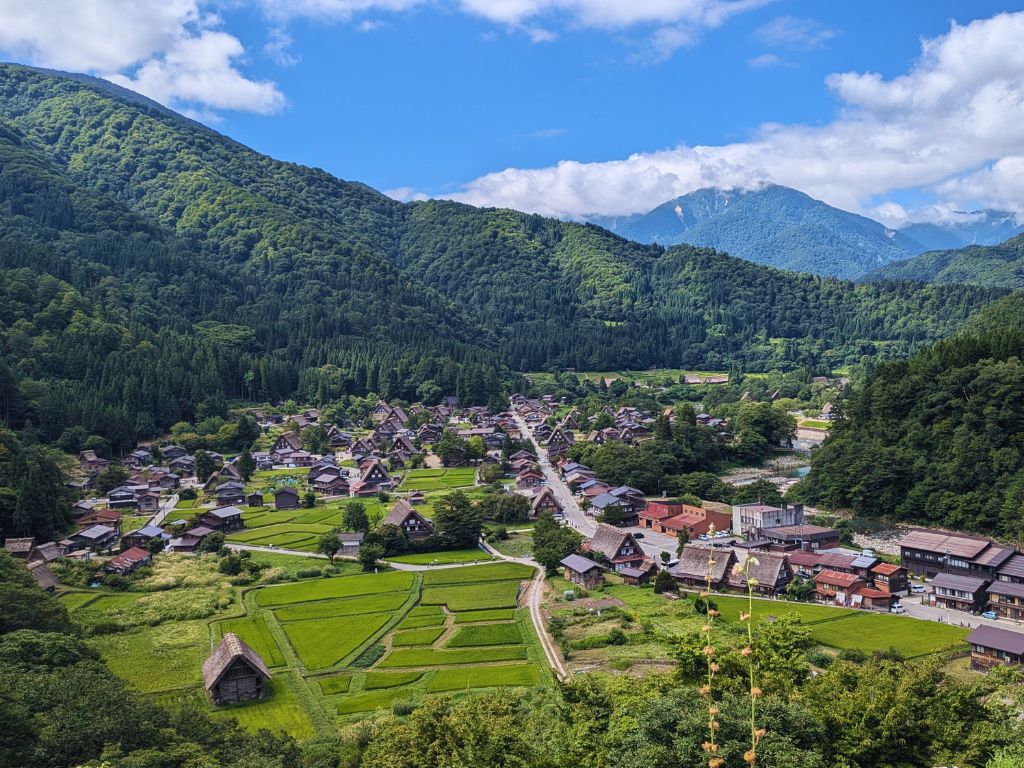
Lastly, some of the most popular tourist destinations in Gifu are in the Alps region. These are Shirakawago and Takayama. Both of these individually might be a bit far for a day trip from Nagoya, but if you’re willing to make the trip, you’ll certainly see why they’ve become so popular! Firstly, Shirakawago, pictured above, is a UNESCO Heritage site nestled in a small remote valley. A visit here will allow you to wander through the gassho-zukuri houses, in which people still live, and explore open air museums and exhibits.
Takayama is a small city which is known for its daily market. The fresh mountain air here is like no other! A visit to this market will allow you to shop for produce, artisan goods, and souvenirs. Takayama is also known for the historic Sanmachi District, which is an area of historic wooden houses that have been converted into sake breweries, artisan shops, and local restaurants.
Autumn Seasonal Foods
Many Japanese people believe that autumn is the best time of year to be a foodie in Japan. That’s largely because the autumn is rice harvesting season! The newly harvested rice, called shinmai in Japanese, is so sweet and tender that Japanese people will stand in line for hours for a single bag. Other than shinmai, here are our favorite foods we recommend sampling if you’re traveling to Nagoya in the autumn.
Fried Oysters

Our first seasonal spotlight is an item you’re likely to see featured on set meal menus in the autumn and winter seasons. Fried oysters! Called kaki fry in Japanese, these little bites are typically served with tartar sauce, and are in season from November through March. If oysters aren’t your thing, autumn is a great time for fresh seafood in general – Sakushima Island is famous for delicious clams, and Nagoya dishes out its famous fried shrimp year-round!

Yaki Imo

Yaki imo (which literally translates to “fried potatoes,” is a simple dish with big flavor that many people overlook! The Japanese sweet potato is very sweet, with a vanilla-like flavor and is milder than the orange yam you might be familiar with, and as such is a very common ingredient in Japanese desserts. It’s also harvested in the autumn, but we recommend giving it a try year round! You can find yaki imo just about everywhere, including grocery stores and convenience stores, but we recommend heading to Osu and trying them at Ujitaya, where they slow roast the potatoes in urns using the traditional method. We recommend trying it with the side of ice cream – it’s absolutely divine! Don’t miss this truly underrated dish.
You can also try the ice cream yaki imo on the vegetarian version of our guided tour of Osu!
Persimmon
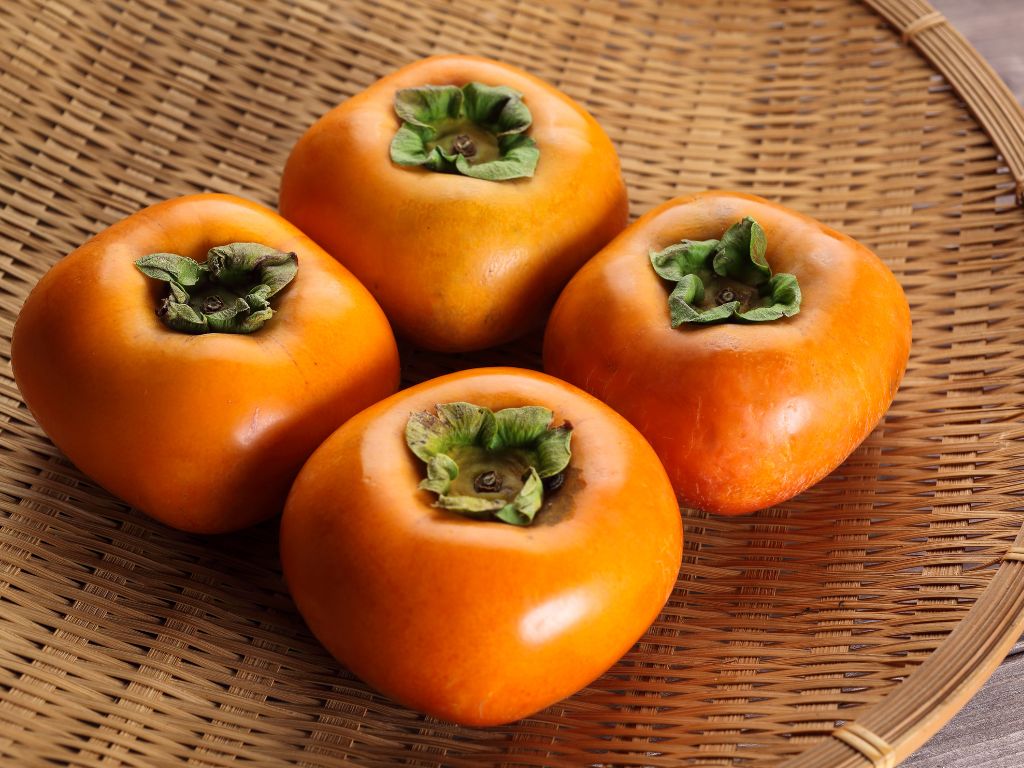
Persimmons are a seasonal fruit that you can see growing all over Aichi Prefecture and the entire Central Japan area. They are harvested from early October to the end of November, and if you go into a grocery store around this period, you’ll see tons of them for sale! There are two main varieties in Japan: The Fuyu variety (pictured above) is square and small, and can be eaten even when firm, like an apple! The Hachiya variety is larger and acorn-shaped, and can be sour when firm. These are typically hung outside to turn into dried persimmons, though you can eat them when they are soft and ripe. You’re unlikely to see them in many recipes other than dried persimmons, so if you’d like to try them, your best bet is to check out any local Japanese grocery store.
Chestnuts

Another seasonal forage is chestnuts! Also called marron or kuri in Japanese, these autumn nuts are used in traditional dishes such as kuri gohan (rice with chestnuts) as well as in sweets like Mont Blanc, which has French origins, but is an extremely popular seasonal flavor in many patisseries and sweets shops in Japan. You can also get a taste of kuri kinton (sweet chestnuts and Japanese sweet potatoes during our Magome-Tsumago hiking tour of the Nakasendo trail. We also love this experience during the autumn – the scenery is gorgeous!
Sake
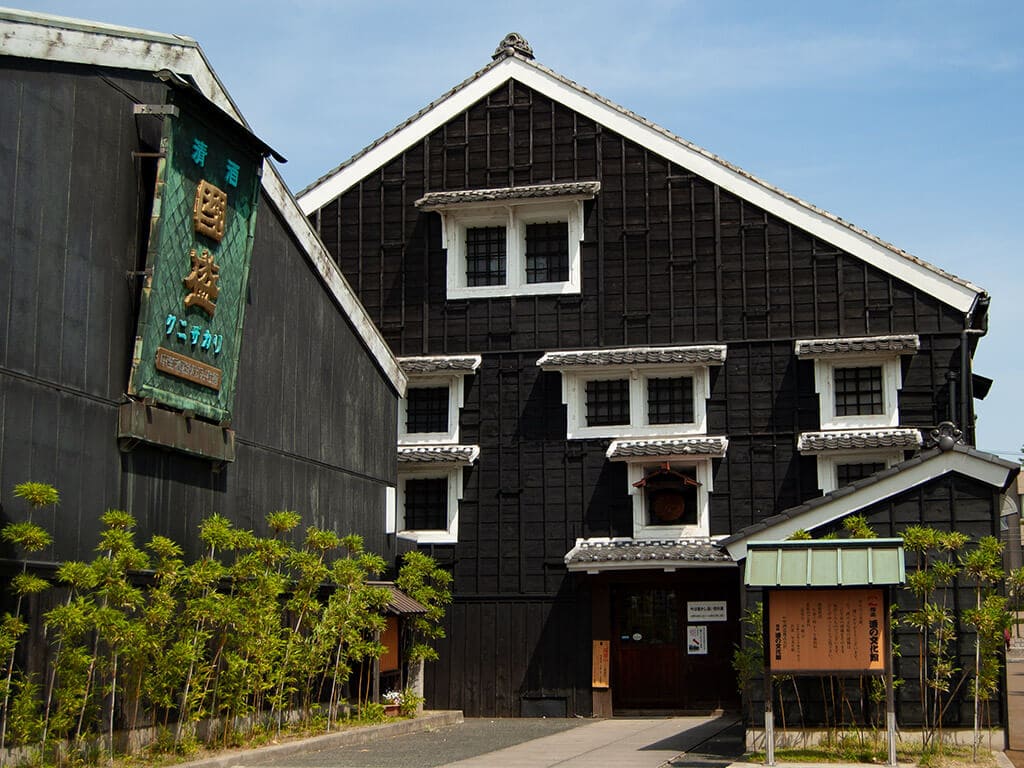
Since rice is harvested during the autumn, this season is a great time to try sake! We recommend a visit to the Kunizakari Sake Museum, which blends history and education along with sake tasting. The museum is a 200-year-old building that was actually used by the Nakano Sake Brewery to produce sake. The museum has exhibits on sake history, traditional brewing methods and production as well as the local history of the Handa area.
While this is a museum, it also boasts a tasting corner where visitors can sample different types of sake and umeshu (plum wine.) You can also buy bottles of your favorite beverages to take home from their shop.
Looking for a more local sake tasting experience? Learn how to select and pair sake with foods during our All-You-Can-Drink Sake Tasting Tour, which takes place right in downtown Nagoya!
Kunizakari Sake Museum (國盛酒の文化館)
Entry Fee: free
Opening Hours: 10:00 – 16:00; closed on Thursdays
Address: 2-24 Higashihonmachi, Handa, Aichi 475-0878
Phone: (+81) 0569-23-1499
Website | Google Maps
Seasonal Autumn Events and Festivals
Nagoya Odori

The Nagoya Odori is a festival that celebrates the traditional Japanese dance, known as nihon-buyō, which is a type of dance that is combined with theatrical elements. It has a rich history, and Nagoya celebrates by hosting the yearly festival and performance. Every year, this show just gets bigger and bigger! Check out our full write up here.
Are you curious about Japanese dance, but not sure you’d enjoy a show because you don’t speak Japanese? Join our CEO and dance expert Elly for an exclusive experience with a professional guide who is also trained in Japanese dance! Spots are very limited, so make sure you book your experience now!
Nagoya Odori Neo (名古屋をどりNEO)
Entry Fee: between 5500 and 11000 yen (Tickets sold here)
Dates: October 11th and 12th 2025, 11:00-14:00 and 17:00-20:00
Address: Nagoya Civic Assembly Hall, 1-1-3 Tsurumai, Showa Ward, Nagoya, Aichi 466-0064
Access: From Nagoya Station take the JR Tokaido Line until Tsurumai Station. From here it’s a 3-minute walk.
Website | Google Maps
Nagoya Festival
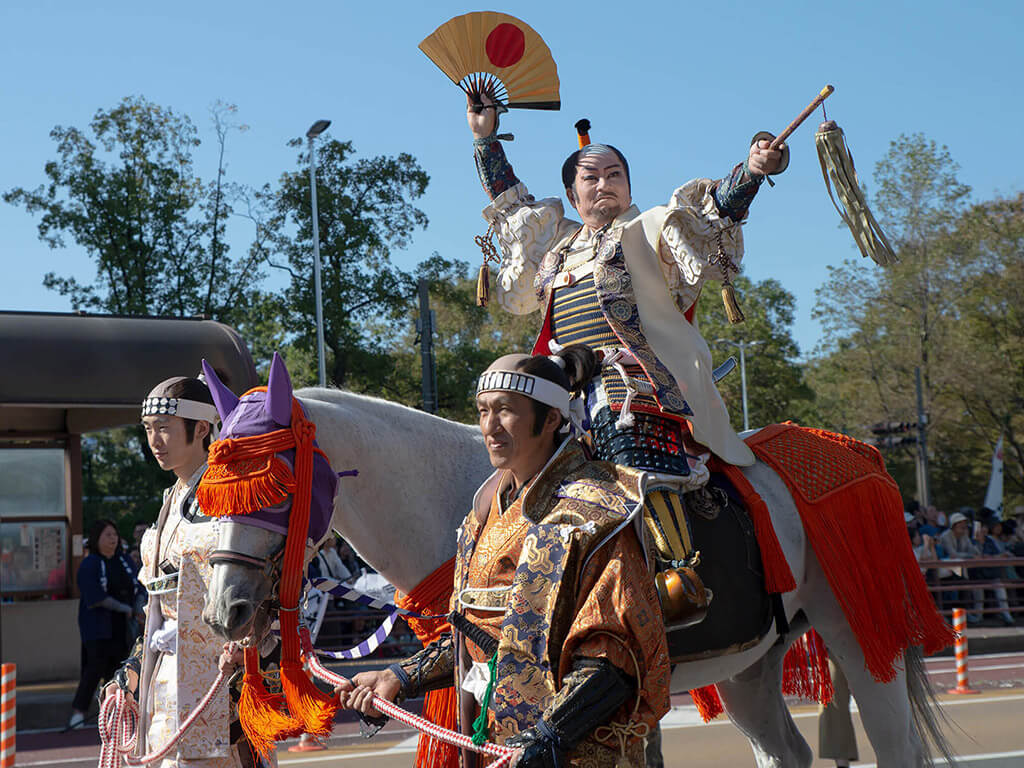
The Nagoya Festival is held yearly in mid-October, and is one of the the biggest (if not THE biggest) festivals in Nagoya!
The highlight of the Nagoya festival is a giant parade featuring historical reinactors, dashi floats, and dancrs – over 700 total participants – which makes its way throughout the downtown area of the city. However, the weekend of the Nagoya Festival, many public attractions such as the zoo, Tokugawa Gardens, and Nagoya Castle, will have free entry for the general public. If that’s not enough, there will be special events going on ALL over Nagoya! Last year there was an arts and crafts fare at Oasis 21, live idol group and dance performances at Hisaya Odori park, and MORE! Check out our full round up or the official website for more.
Nagoya Festival (名古屋まつり
Entry Fee: free
Date: 20th and 21th of October 2025
Location: Various locations in central Nagoya
Website (Japanese only)
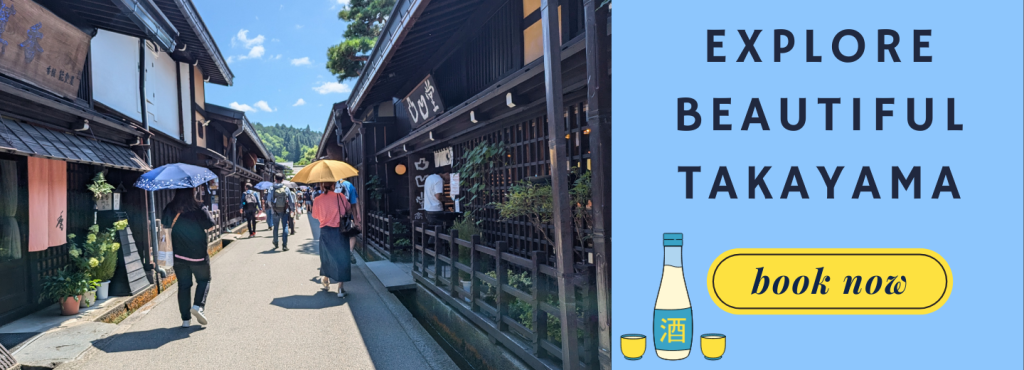
Yattokame Festival
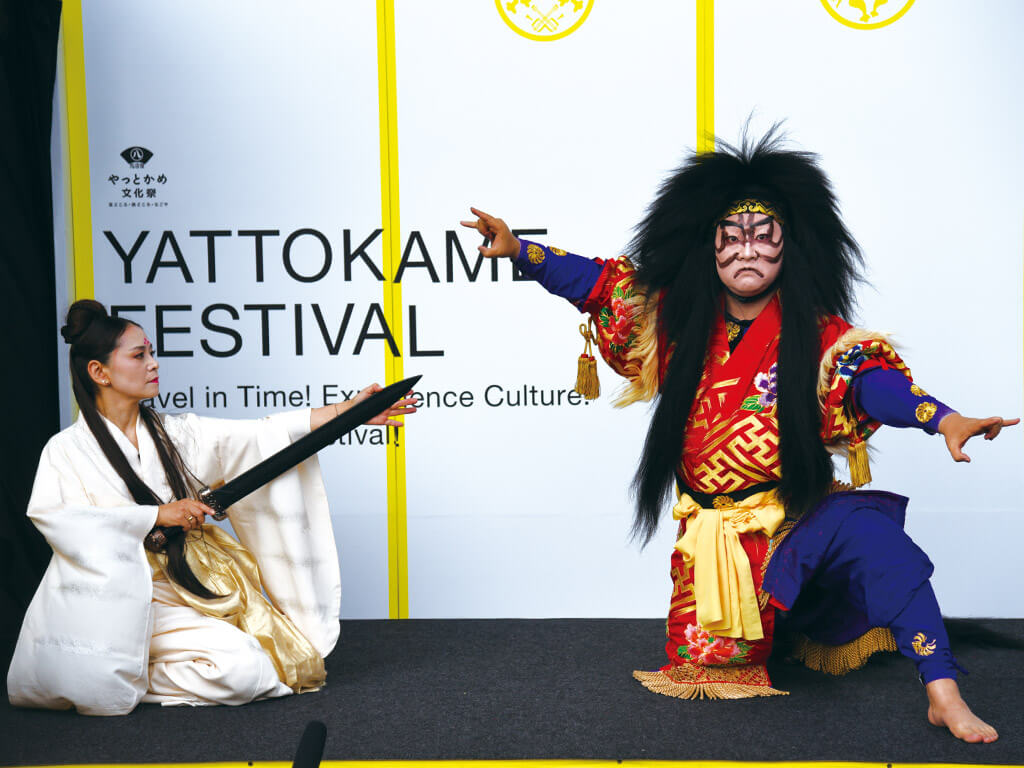
Speaking of huge cultural festivals, one of the only other autumn festivals that comes close to the Nagoya Festival is the Yattokame Festival DOORS. The festival is named after a word in the Nagoyan dialect that means something like “long time, no see,” and invites guests to experience elements of Japanese culture that they may not have seen in a while.
Unlike the Nagoya Festival that lasts only for one weekend, The Yattokame Doors Festival is actually made up of many small events that take place in October and November. If you’re in Nagoya during these selected dates, you can attend cooking workshops, many kinds of live theater and dance performance, kabuki shows, and even walking tours throughout the city. Check out our full article on the Yattokame Festival here.
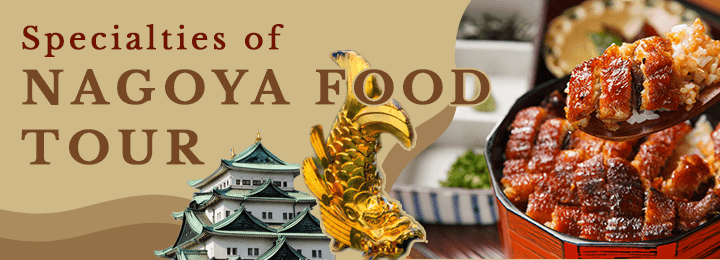
Yattokame Festival DOORS
Entry Fee: depends on the event
Dates: October 25 – November 16 2025
Tickets:
Location:
Website (Japanese only)
This post was last updated in July 2025.
Although we strive to provide you with the most accurate and up-to-date information possible, please note that changes may occur nonetheless. We recommend you confirm any relevant information, such as event cancellations or changes, opening hours, or possible restrictions, using a direct source. Please keep in mind that these sources might be in Japanese only.
Did you enjoy this article?
Make sure to also check out our other posts about Nagoya and trust us if we say Nagoya is not boring!
Be sure to follow us on Facebook for new articles every week, and see our Instagram for pictures and stories about Nagoya!
Tag us 📲
Which museum on the list is your favorite? If you have visited any museum on the list please share it and tag us on social media with #nagoyaisnotboring

